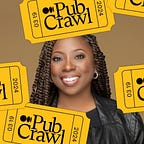What We’re Reading: Do you innovate or do you problem solve?
It’s that time of year when people tend to employ the “rule of the re-:” reassess, review, and renew. It’s no surprise, then, that several Medium writers are penning pieces about recovering from job loss, refining their viewpoints, and re-imagining the performance review.
The topics may seem vastly different at the outset, but at the heart of these stories is actionable advice on problem solving or innovating in some way.
Here are three for your radar.
- Of her early-year job loss after a layoff from Spotify, Nicole Alexandra Michaelis writes: “Being laid off was a good thing in terms of career acceleration. I still would have liked to avoid it. Why? Because even if my career got a boost, I took some major damage that I might not recover from for years.”
- On stagnation in the office, rachel audige writes: “I believe that corporate innovation teams have grown too reliant on one or two tools (read ‘methods’ or processes) and do not tend to ‘drop them’ even when they are no longer of service.”
- Performance reviews need a do-over, says HR pro Colleen Wheeler McCreary. She writes: “At every company I’ve worked at, I’ve ripped out the performance review systems and looked for new ways of solving what people say are the points of performance reviews. To me, ensuring employees hear from their managers on how they’re doing relative to goals should happen regularly instead of once or twice a year.
As you contemplate what’s next for you, I’m curious: To level up in life, do you need to innovate or do you need to problem solve? If you write about this, please let me know!
Adrienne Gibbs, Director of Content @ Medium
P.S. We just launched a new membership option that takes your support of writers to the next level: Friend of Medium. As a Friend of Medium, your membership dollars will directly support the writers you love — plus the editors, curators, and teams who make Medium a vibrant, inclusive home for human stories. It comes with other exclusive benefits as well, so learn more and become a Friend of Medium here.
What We’re Reading
How Many Hobbits? A Demographic Analysis of Middle Earth
Published by demographer Lyman Stone, who presents a population study of the fantasy world created by Lord of the Rings author J.R.R. Tolkien
Tolkien is frustratingly vague about population. He almost never gives us estimates of settlement sizes, and many of the larger metropolises of Middle Earth (like Pelargir) never actually appear on the page.
Sandra Day O’Connor
Published by writer and photographer Tom Zimberoff
This essay is about the photographer who took an iconic photo of United States Supreme Court Justice Sandra Day O’Connor. O’Connor recently died, and this is one of many stories remembering her impact on American media, law, and for women.
The Art Monster at the End of This Book
Published by Jude Ellison S. Doyle, the author of “Trainwreck”
Writer and diarist Anais Nin took the same liberties as her male peers — all of them, including the horrendous ones.
Masterclasses, TEDx Talks, Spam, and the Rise of the Fluffpreneur
Published by philosopher and professor Douglas Giles, PhD who analyzes some of the folks who are selling their own masterclasses on social media.
What fills my inbox are e-mails selling me fluff. Not stuff, fluff. Fluffy classes, fluffy talks, and fluffy get-rich-quick schemes. The sellers sending the e-mails are the fluffpreneurs — professional fluff sellers.
Do you read the comments? Financial Times user researcher Amina Amid writes about the ins and outs of planning for reader comments in “UX Research for Comments Sections.”
Are you run by instinct or by your values? YJ Jun asks us to learn a lesson from her beautiful pup, a Golden Retriever named Mika in “Don’t Chase the Fox.”
Today’s Final Word is about what might have happened at OpenAI, and the importance of a computer that reasons symbolically. This missive comes from writer and Gado Images CEO Thomas Smith, who publishes The Generator.
“Q*’s reported ability to reason symbolically — even if it’s at a very low level currently — suggests that it may have successfully developed the kind of connectionist “virtual computer” that Smolensky proposed.
The ability to do basic math, then, isn’t really the point of OpenAI’s breakthrough. Rather, the fact that a neural network-based model has reportedly developed this capability suggests that the model has taken a major step towards mimicking the underlying abilities of the human brain.
That leap is likely what terrified OpenAI’s board. If Q* has taken a big step towards a more brain-like architecture, that suggests that as it expands, it could develop other capabilities that are similar to those of the human brain.”
Read the rest of Smith’s essay here.
What are you reading? Are you a problem solver, innovator, or something else? Let us know in the responses!
